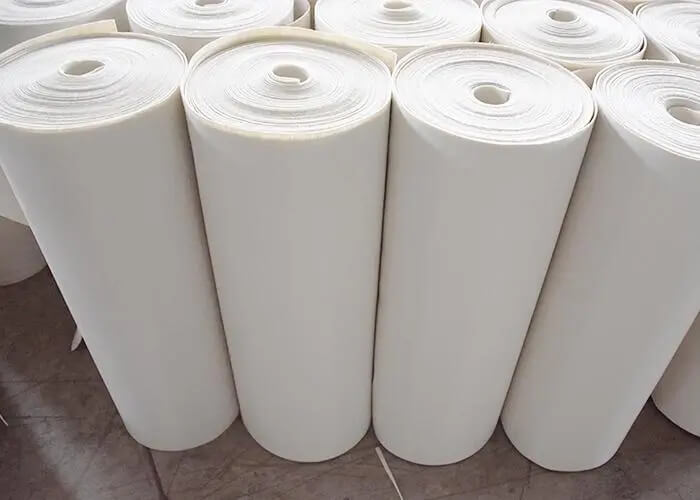Biodegradable Nonwoven Fabric: Materials, Standards, and Market Trends
Can Nonwoven Fabric Biodegrade? It Depends on the Raw Materials!
Nonwoven fabrics are widely used in industries such as packaging, hygiene products (e.g., diapers, masks), agriculture, and medical supplies. However, their environmental impact depends largely on the raw materials used in production.
1. Conventional Nonwoven Fabrics: Mostly Non-Biodegradable
Most nonwoven fabrics today are made from:
- PP (Polypropylene)
- PET (Polyester)
- Polyester-Viscose Blends
These materials are not biodegradable in natural conditions. While they may break down under sunlight, wind, and rain (a process called weathering), complete degradation in soil can take up to 300 years. For example:
- PP nonwoven fabric may fragment within 1-2 years when exposed outdoors but remains stable for decades indoors or in landfills.
2. The Rise of Biodegradable Nonwoven Fabrics
With global plastic bans (such as China’s “Plastic Restriction Order“) and increasing environmental concerns, biodegradable nonwoven fabrics are gaining traction. These are made from:
A. Bio-Based Biodegradable Materials
- PLA (Polylactic Acid) – Derived from corn starch or sugarcane
- PHA (Polyhydroxyalkanoates) – Produced by microbial fermentation
B. Petroleum-Based but Biodegradable Materials
- PBAT (Polybutylene Adipate Terephthalate) – A compostable polymer
These materials can decompose under specific conditions, meeting international compostability standards.
Biodegradability Standards: EN 13432, GB/T 28206, and More
For a nonwoven fabric to be considered truly biodegradable, it must meet strict criteria, such as:
✅ EN 13432 (EU Standard)
- Biodegradation: ≥90% degradation within 6 months in controlled composting.
- Eco-toxicity: The resulting compost must not harm plant growth.
✅ GB/T 16716.7 & GB/T 28206 (China Standards)
- Similar requirements, ensuring safe decomposition without microplastic pollution.
If a nonwoven fabric meets these standards, it can be labeled as “industrially compostable” or “home compostable.”
Challenges in Producing Biodegradable Nonwoven Fabrics
While the technology exists, several hurdles remain:
1. Material Performance Issues
- PLA and PBAT have different mechanical properties compared to PP/PET.
- Modifications (e.g., blending with starch or other biodegradable additives) are often needed to improve strength and flexibility.
2. Higher Production Costs
- PLA & PBAT prices: ~$3,000+/ton (vs. PP at ~$1,500/ton).
- Even with cost-reducing additives (e.g., starch blends), biodegradable materials remain ~2x more expensive than conventional plastics.
3. Market Adoption is Still Growing
- Consumers and manufacturers are gradually shifting, but price sensitivity slows adoption.
- Government policies and corporate sustainability goals are driving demand.
The Future of Biodegradable Nonwoven Fabrics
The “plastic ban” movement is not about eliminating plastics entirely but promoting:
- Reduction & Recycling – For durable plastic products (e.g., automotive parts, furniture).
- Biodegradable Alternatives – For single-use items (e.g., shopping bags, disposable masks, diapers).
As production scales up and technology improves, costs will decrease, making biodegradable nonwoven fabrics more accessible.
Conclusion: A Sustainable Shift is Underway
Biodegradable nonwoven fabrics are a promising solution to plastic pollution, but widespread adoption requires:
✔ More affordable raw materials
✔ Improved manufacturing techniques
✔ Stronger policy support & consumer awareness
The industry is evolving, and with continued innovation, eco-friendly nonwovens will play a key role in a sustainable future.
If you want to purchase non-woven bag please contact pinyue.

